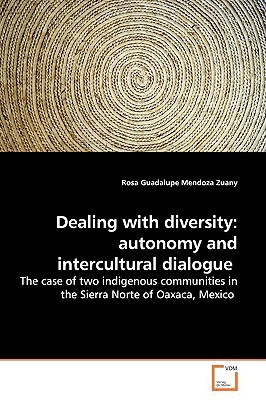
- We will send in 10–14 business days.
- Author: Rosa Guadalupe Mendoza Zuany
- Publisher: VDM Verlag
- ISBN-10: 3639153308
- ISBN-13: 9783639153309
- Format: 15.2 x 22.9 x 1.6 cm, minkšti viršeliai
- Language: English
- SAVE -10% with code: EXTRA
Reviews
Description
Ixtlán and Guelatao, indigenous Zapotec communities in the Sierra Norte of Oaxaca, Mexico, have achieved an important degree of community-based autonomy relying on dialogue at the internal and external level. This book explores the relation between the construction of autonomy and the exercise of intercultural dialogue at the intra-community, inter-community and external levels through the analysis of three main themes. First, the categorisation of their inhabitants to define their rights and responsibilities within the internal socio-political structures. Second, the re-appropriation of their territories and natural resources and organisation around the figure of the comunidad agraria. Finally, the relation between communities within the municipality of Ixtlán on issues such as allocation of federal funds and usos y costumbres ruling their interactions; and the political and ideological influence of outsiders on the municipal balance of power. This research should be useful to social scientists, students, activists, politicians, indigenous organisations and communities who are trying to understand experiencies of de facto indigenous autonomy through intercultural dialogue.
EXTRA 10 % discount with code: EXTRA
The promotion ends in 23d.16:33:25
The discount code is valid when purchasing from 10 €. Discounts do not stack.
- Author: Rosa Guadalupe Mendoza Zuany
- Publisher: VDM Verlag
- ISBN-10: 3639153308
- ISBN-13: 9783639153309
- Format: 15.2 x 22.9 x 1.6 cm, minkšti viršeliai
- Language: English English
Ixtlán and Guelatao, indigenous Zapotec communities in the Sierra Norte of Oaxaca, Mexico, have achieved an important degree of community-based autonomy relying on dialogue at the internal and external level. This book explores the relation between the construction of autonomy and the exercise of intercultural dialogue at the intra-community, inter-community and external levels through the analysis of three main themes. First, the categorisation of their inhabitants to define their rights and responsibilities within the internal socio-political structures. Second, the re-appropriation of their territories and natural resources and organisation around the figure of the comunidad agraria. Finally, the relation between communities within the municipality of Ixtlán on issues such as allocation of federal funds and usos y costumbres ruling their interactions; and the political and ideological influence of outsiders on the municipal balance of power. This research should be useful to social scientists, students, activists, politicians, indigenous organisations and communities who are trying to understand experiencies of de facto indigenous autonomy through intercultural dialogue.


Reviews